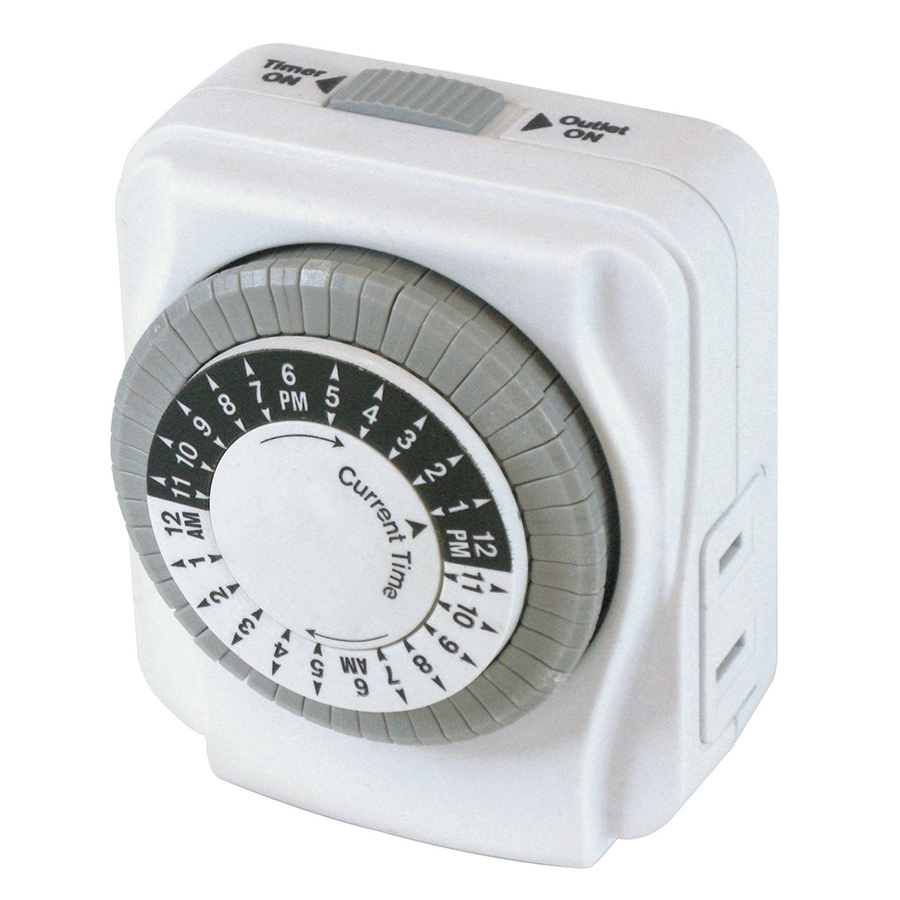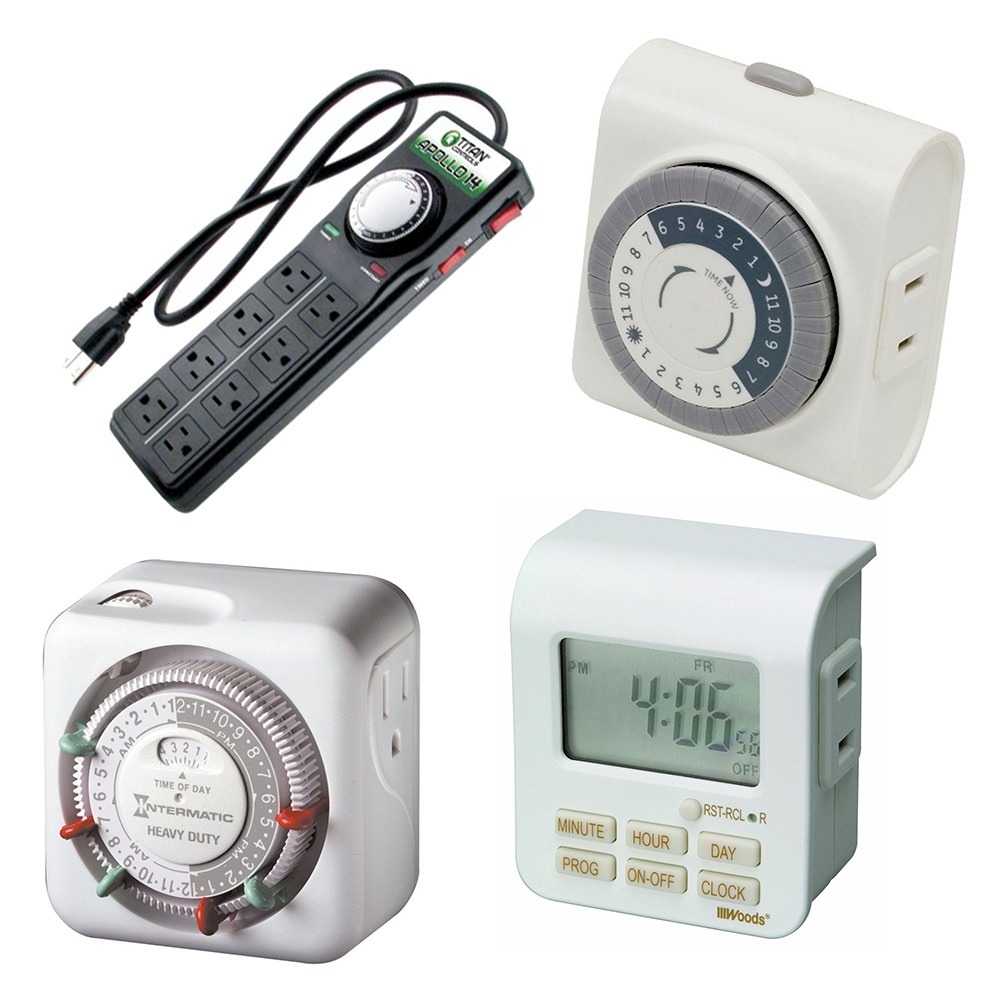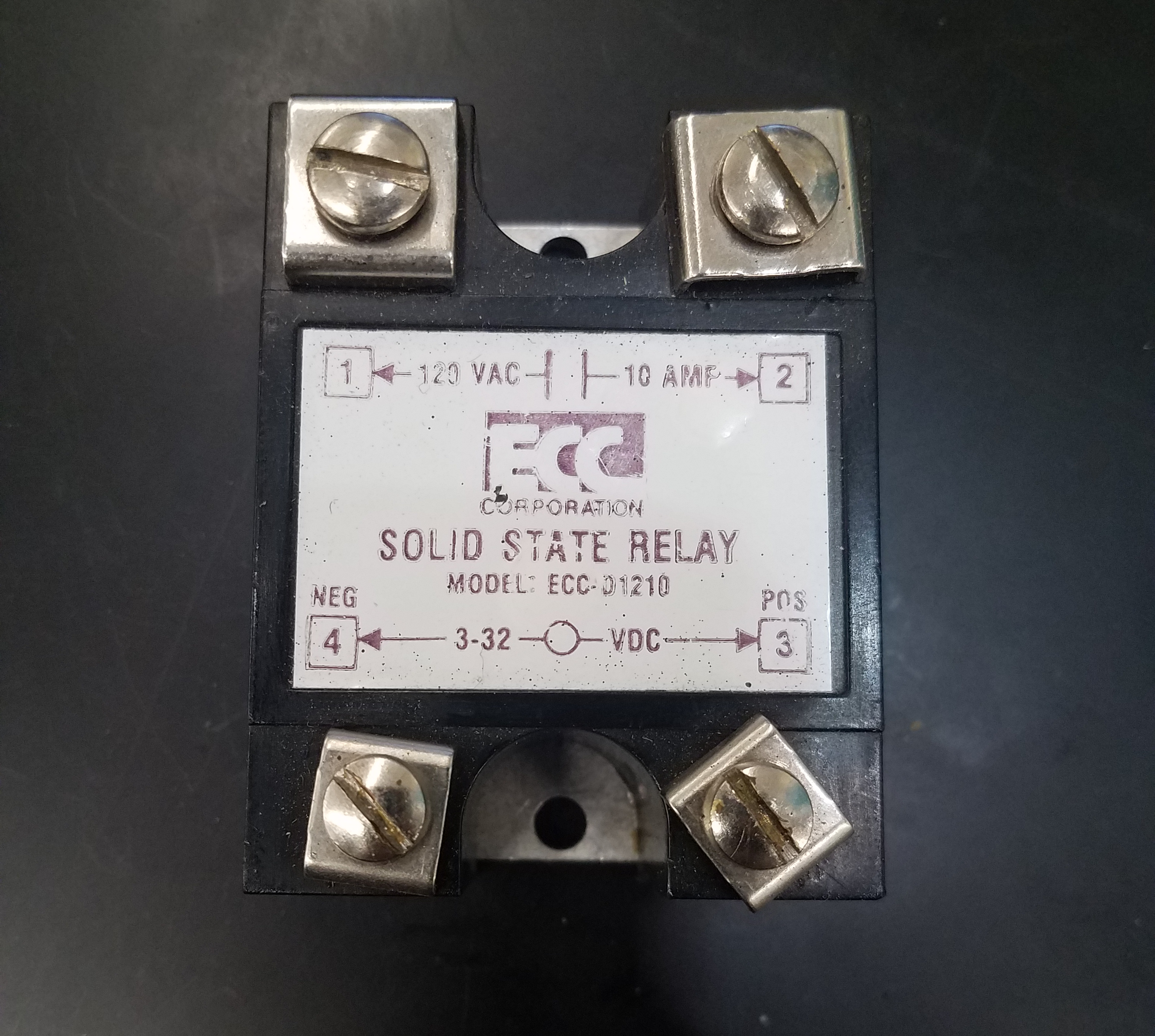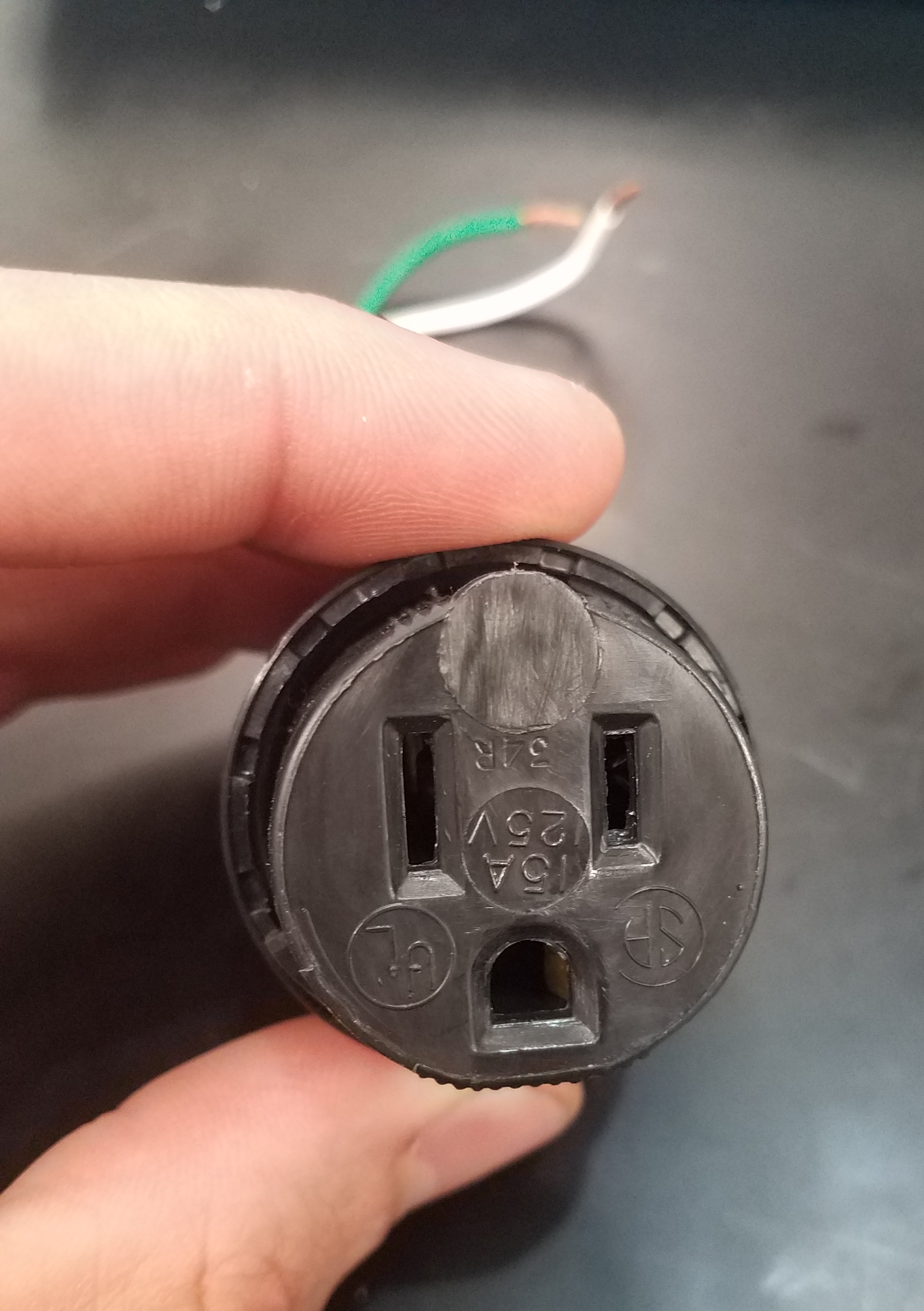
Learning outcomes:
Have you answered:
Trying to balance my full-time job, family, relationships, and this class have really taken a toll on me. I have been falling far behind on the weekly assignments and need to keep my final as simple as possible. I can not take on too much, or I will not be able to finish.
That being said, I was working in my indoor garden, and was trying to figure out how I was going to set up all my life support systems on timers, and what kind of timers to use. Most timers commercially available to me in my area are some variation of this pin timer.

It can only be programmed for 30min intervals (2 pins per hour), which is useful for my lighting systems, but I need timers with smaller intervals (01 - 30s interval size) for other applications like fans, water systems, water chillers, etc. It would also be nice to not have to reset the programming of the timer every time I changed light cycles.
I decided I would like to make a pre-programmed light cycle timer. The timer would have all of the different light cycles timed into it, change cycles at the end of the day (end of 24hr. cycle), and indicate which cycle it is currently in.
The cycles I need the timer to have programmed in are:

I am still trying to maintain simplicity, thus, I have decided to make the timer an "outlet timer" similar to other timers like the one seen above.
Everybody...
All jokes aside, There are a lot of "programmable timers" out on the market. I have purchased and used many of them, but found them to be severely lacking. The General quality of these devices is also lacking. These devices often break down and have mechanical issues early on in their use life, and are not as reliable as they need to be to run life support systems.

My proposed solution to my specific needs, are a more dynamically customizable "programmable timer". Using the same design, I can have multiple pre-sets that I can rotate through and quickly change to in real time according to what I need at the time. Many commercial timers can only hold 1 "programmed" cycle, Mine will be able to hold multiple simultaniously. Also, having fabricated the timer from scratch, I will be able to service it and improve upon it in the future.
After walking through my thought process with my instructors, we had concluded that to do what I needed the timer to do, I would need to use a solid state relay to control the outlet on the other end. I will choose the cycle I want the timer to be in by cycling through the 3 programs via push button. To see which cycle is selected, each cycle will be attached to a corresponding LED, so as you cycle through, you can see which LED (with its own unique color) is lit and which cycle the timer is in. Having each cycle with its own color allows me to quickly check the cycle, even from across the room.


I will end up fabricating:
Materials:
($0.00 signifies that I already had it, I found it, or I was given it without charge)
Total: ~$8.00 - $44.00
How many different programmed timer cycles can the ATtiny44a Hold?
Can this timer design be used for all of my timers regardless of time scale needed? (from seconds to hours)
What is the long term durability and accuracy of the timers?
Tight.
I have been having to spend a lot of time catching up on previous week's assignments, working +40hrs a week at my Job, and maintaining some control of my other responsibilities.
Since the timer, in actual practice, will control lights over hours, it will be difficult to show this in a short 10-30s video durring my presentation. For purposes of the Final Presentation, I will program the timer to a much shorter time scale to show the on/off switching and the cycle selection functions.